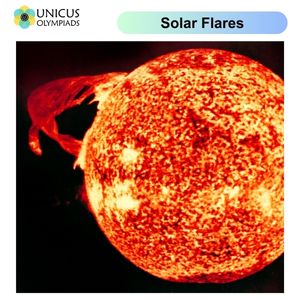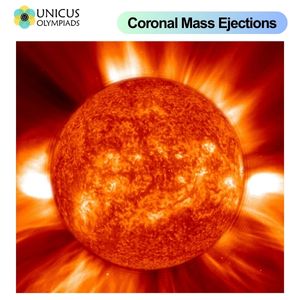

Space weather refers to the environmental conditions in space that can affect both technological systems on Earth and human activities in space. It is primarily driven by the Sun's activities, including solar flares and coronal mass ejections (CMEs), which can release large amounts of solar radiation and charged particles into space. These phenomena can have significant impacts on satellite operations, power grids, communication systems, and even astronauts in space. Understanding space weather is crucial for predicting and mitigating its effects on modern technology and space exploration. This article delves into the science of space weather, the role of the Sun, and the impact of solar flares and CMEs on space and Earth.
Space weather is the term used to describe the interaction between the solar wind, solar radiation, and Earth’s magnetosphere. Just as weather on Earth affects our daily lives, space weather has the potential to disrupt technological systems, communications, and space travel. The Sun, which is the primary source of energy for space weather, emits a constant stream of charged particles known as the solar wind. Additionally, the Sun's magnetic activity, including solar flares and CMEs, can cause disturbances in space weather that have a direct effect on Earth’s magnetosphere and atmosphere.
The Sun’s activity is the driving force behind space weather. The Sun constantly emits a flow of charged particles known as the solar wind. The Sun also experiences cycles of magnetic activity, with an 11-year solar cycle, during which the Sun’s magnetic poles reverse. During periods of solar maximum (when solar activity is at its peak), the Sun is more likely to release intense bursts of energy in the form of solar flares and CMEs. These events can trigger geomagnetic storms, which impact Earth’s magnetosphere and the technologies we rely on.
A solar flare is a sudden and intense burst of energy and radiation from the Sun's atmosphere. These eruptions occur when magnetic energy stored in the Sun’s atmosphere is suddenly released. Solar flares emit a broad spectrum of electromagnetic radiation, including X-rays and ultraviolet light. These flares can last from minutes to hours and are typically associated with sunspots—regions of intense magnetic activity on the Sun’s surface.

Solar flares can have significant effects on Earth’s environment. The most direct impact is on communication and navigation systems, as the intense radiation can disrupt radio signals and GPS systems. Here’s how solar flares affect Earth:
A notable example of the impact of solar flares occurred in 1989 when a massive solar flare caused a geomagnetic storm that knocked out power in parts of Canada. The flare induced electrical surges in power lines, causing transformers to fail and power outages in the affected regions. Additionally, communication systems were disrupted, and satellite systems were temporarily affected.
Coronal Mass Ejections (CMEs) are massive bursts of solar wind and magnetic fields rising from the solar corona and releasing into space. CMEs can release billions of tons of solar plasma and carry a magnetic field stronger than the Earth’s own magnetosphere. When CMEs reach Earth, they interact with Earth’s magnetic field, potentially causing geomagnetic storms that affect satellite communications, navigation systems, and power grids.

CMEs have a much larger impact than solar flares because they carry a significant amount of charged particles that can directly interact with Earth’s magnetosphere. The effects of CMEs can be far-reaching:
One of the most significant events related to CMEs occurred in 1859, known as the "Carrington Event." It was the most powerful geomagnetic storm on record, caused by a massive CME hitting Earth. Telegraph systems across Europe and North America were disrupted, and some even caught fire. If a similar event occurred today, the impact could be catastrophic, as modern societies are heavily reliant on electrical grids, satellite communications, and GPS systems.
Space weather, including solar flares and CMEs, is a critical consideration for space exploration. As human space missions move farther from Earth, understanding and predicting space weather becomes essential for astronaut safety and the success of space missions. The high levels of radiation emitted by solar flares and CMEs pose a significant challenge to long-duration missions to the Moon, Mars, and beyond.
Astronauts in space are exposed to higher levels of radiation from solar flares and CMEs. Prolonged exposure can increase the risk of radiation sickness, and long-term exposure can increase the likelihood of cancer. Space agencies like NASA are working to develop radiation shielding and strategies for protecting astronauts from space weather events. For example, NASA’s Artemis program, which aims to send astronauts back to the Moon, has incorporated space weather forecasting and radiation protection into its mission planning.
Spacecraft and satellites operating outside the protective shield of Earth’s atmosphere and magnetosphere are vulnerable to the damaging effects of solar radiation and energetic particles. Space agencies closely monitor space weather to safeguard these systems and ensure that they continue to operate efficiently. Protective measures such as hardening satellite electronics, maneuvering satellites to safer positions during solar storms, and temporarily shutting down satellite systems are common methods for mitigating the effects of space weather.
Understanding space weather is vital for preparing for and mitigating its potential effects. Space weather forecasting is an ongoing field of research and involves monitoring solar activity and predicting solar flares and CMEs. Satellites such as NASA’s Solar Dynamics Observatory (SDO) and the European Space Agency’s Solar and Heliospheric Observatory (SOHO) provide real-time data on solar activity. These observatories allow scientists to track solar flares and CMEs, helping to predict when they might impact Earth.
Space agencies issue space weather alerts to warn about potential impacts on satellite communications, navigation systems, and power grids. For example, NOAA (National Oceanic and Atmospheric Administration) in the United States provides space weather forecasts and warnings, especially for events that may interfere with Earth-based infrastructure. Similarly, the European Space Agency (ESA) and Japan’s JAXA work to provide warnings about space weather events and their potential effects on space missions.